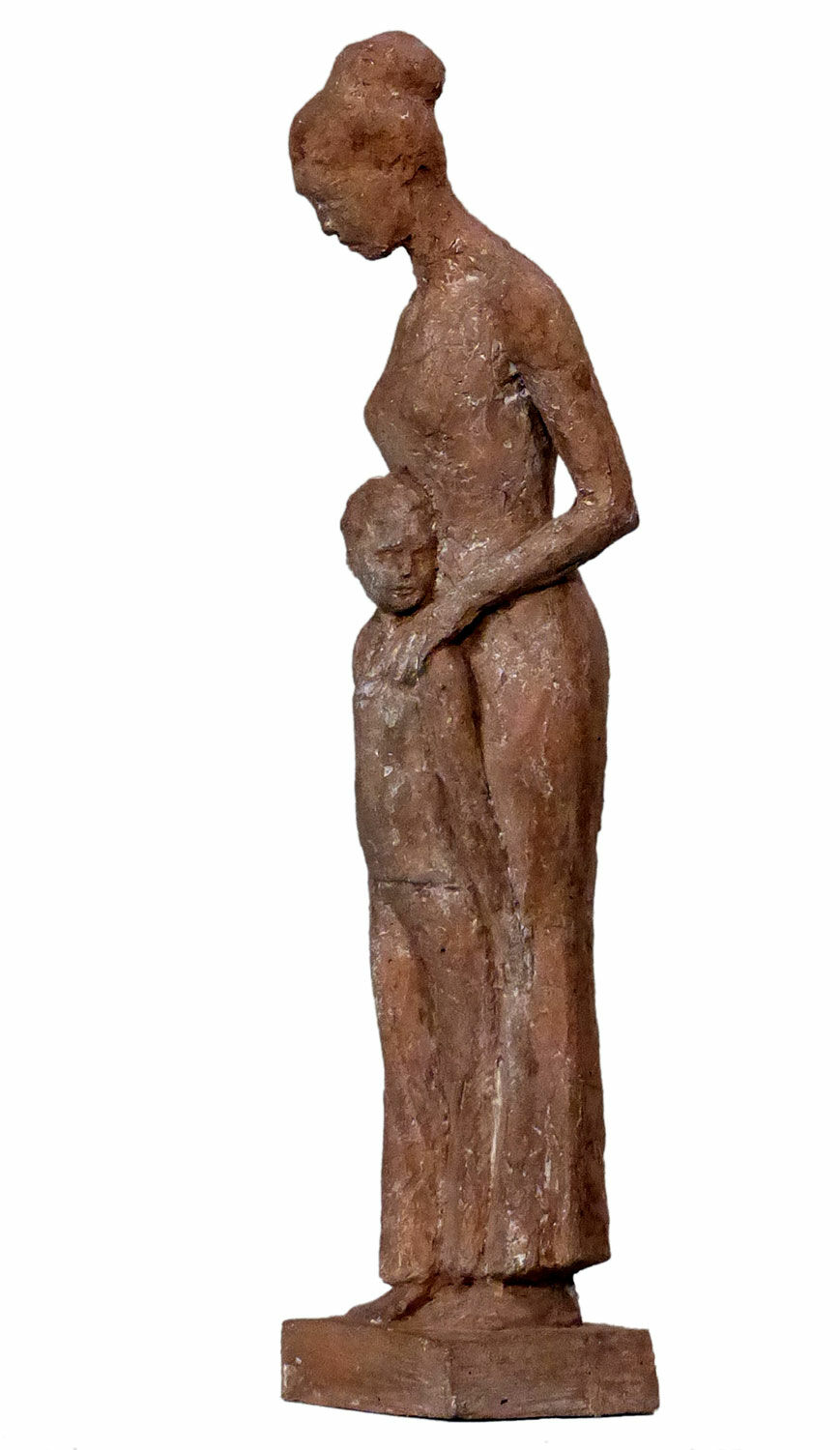Sculpture "Together" (2012), cast stone
Sculpture "Together" (2012), cast stone
Quick info
limited, 16 copies | numbered | signed | cast stone | size 47 x 10 x 9 cm (h/w/d) | weight approx. 3.6 kg
Detailed description
Sculpture "Together" (2012), cast stone
Sculpture made of cast stone. Limited edition of 16 copies, numbered and signed. Size 47 x 10 x 9 cm (h/w/d). Weight approx. 3.6 kg.

About Angelika Kienberger
The sculptures of the German sculptor Angelika Kienberger are always reflecting her emotional life. During the process she lets personal experiences flow. These experiences can be represented visually and emotionally but they can also be evoked through identification with a certain theme. Through artistic representation, this experience should be comprehensible to the viewer.
All elements of reality are an inspiration for themes for the artist. However, particularly the human being is the focus of her work – mainly couples or women. Her works of art are stylised representations that radiate vitality from the stillness, from the movement that is only hinted at.
Collective term for all casting processes that ars mundi carries out with the help of specialised art foundries.
Stone casting
Similar to artificial marble, with the difference that the substitute stone in powder form is used instead of marble powder.
Bonded Bronze (Cold-Cast-Bronze)
Bronze powder is polymer-bonded. Special polishing and patination techniques give the surface of the casting an appearance similar to the bronze.
Imitation Wood
In order to guarantee absolute fidelity to the original, an artificially manufactured imitation wood is used as a base material that features typical wood characteristics: density, workability, colour and surface structure.
Ceramic Mould Casting
Ceramic mould casting usually requires the use of casting clay, which is then fired and optionally glazed. Instead of the usual rubber moulds, plaster moulds are often used in ceramic casting and porcelain production.
Cast Bronze (Lost-Wax Casting)
For the cast bronze, the thousand-year-old lost-wax technique is used. It's the best, but also the most complex method of producing sculptures.
Term for an art object (sculpture, installation), which is produced in multiple copies in a limited and numbered edition according to the artist‘s will.
Artist's multiples have been called the most accessible and affordable art on the market.
A plastic work of sculptural art made of wood, stone, ivory, bronze or other metals.
While sculptures from wood, ivory or stone are made directly from the block of material, in bronze casting a working model is prepared at first. Usually, it is made of clay or other easily mouldable materials.
The prime time of sculpture after the Greek and Roman antiquity was the Renaissance. Impressionism gave a new impulse to the sculptural arts. Contemporary artists such as Jorg Immendorf, Andora, and Markus Lupertz also enriched sculptures with outstanding works.












